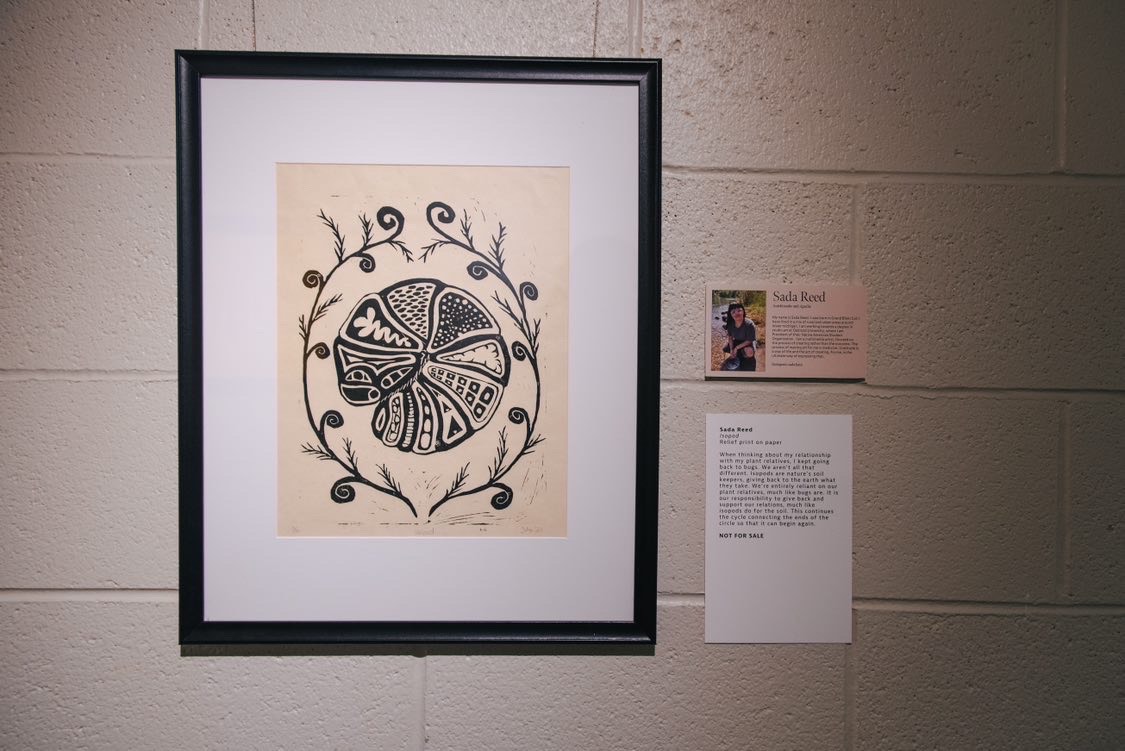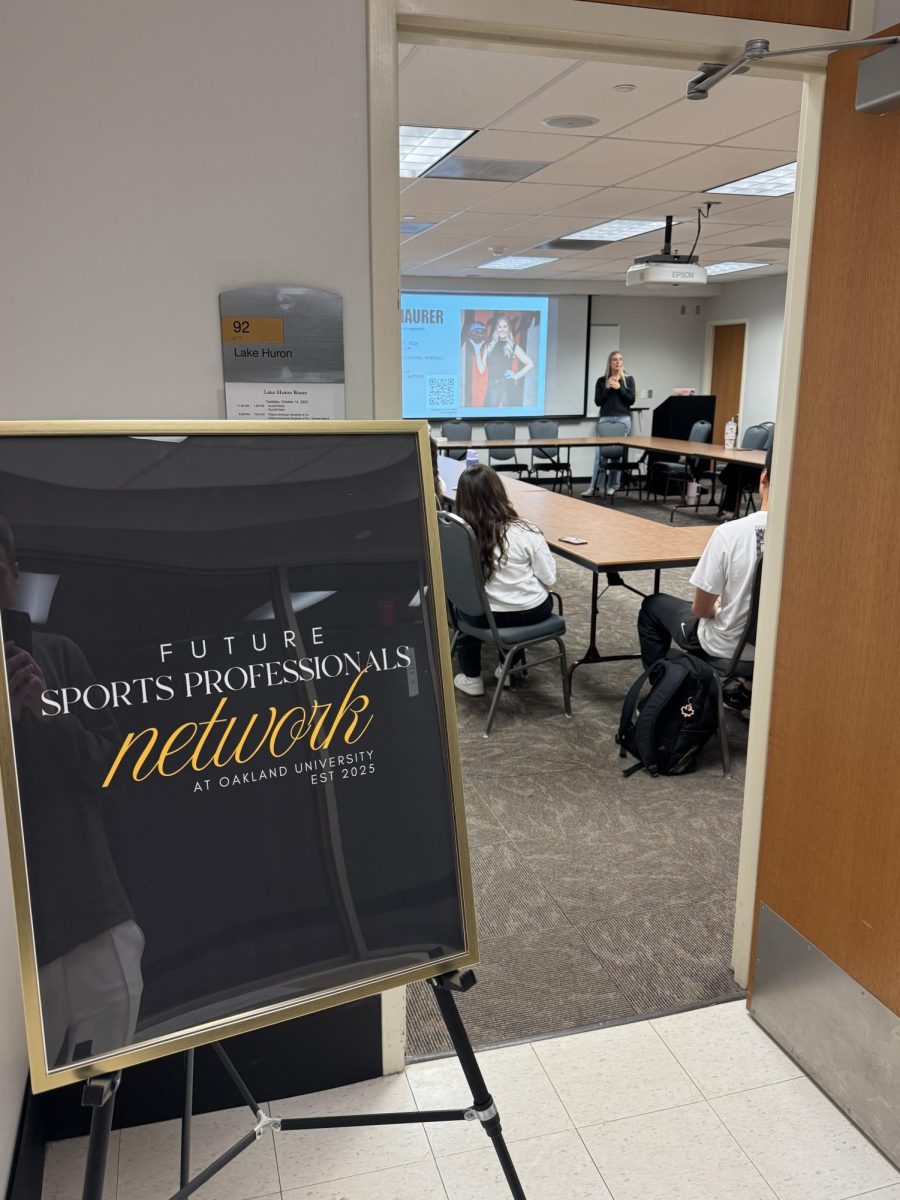In the past few years, Sada Reed has seen their passion for art bloom. This January, Reed was accepted into their first art exhibition: the Anishinaabek art show at the University of Michigan Ann Arbor. The show welcomed Anishinaabek artists to create pieces that represented the relationship between humans and the natural world.
Reed utilized a traditional Ojbwe ink printing technique to create their piece, entitled “Isopod”.

According to Reed, “Isopod” is a homage to bugs, nature’s soil keepers.
“The whole theme of the gallery was one’s relationship with their plant relatives. The best way I could describe that in my art was through bugs,” Reed said. “I used the roly-poly [also known as isopods] as inspiration for my work. Roly polys give back to the soil whatever they take from it; I believe humans ought to follow the isopod’s example when interacting with nature.”
Surrounding the roly-poly in “Isopod” are fiddlehead ferns.
“Those [fiddlehead ferns] are the first food that pops up every spring, which has great cultural significance to the Anishinaabe people,” Reed said.
As an Anishinaabe and Apache Native American, Reed draws inspiration from cultural heritage when creating their art.
“I try to make artwork that is meaningful. I enjoy making art about nature,” Reed said. “I enjoy making symbolic art that connects to my culture and my plant and animal relatives.”
Reed is the president of the Native American Student Organization at Oakland University. Reed’s involvement with the organization, especially their work on the university’s Native American Heritage site, provides the artist with additional inspiration.
“I am constantly doing work out there [on the Native American Heritage site] – a lot of manual labor,” Reed said. “I find myself thinking about my work on the site a lot. I often see various birds and plants when I’m out there, which inspire me to create art.”
Reed participated in the art installation process before the official opening of the gallery.
“I was there the night before the gallery opened delivering my art piece and all the other artists were there too,” Reed said. “[The completed exhibit] is stunning and beautiful. I got to meet some of the artists and talk to them. They are the most down-to-earth people.”
Reed describes the process of setting up the art show as exhilarating. Reed plans to participate in future exhibitions, with the intention of testing out new techniques and themes.
“I don’t necessarily feel the need to stick to one art medium,” Reed said. “I’d like to test out different approaches in my discipline. What drives me is having something new to create.”
The Anishnaabek art show is Reed’s debut public display of their work, but the exhibition will certainly not be their last. Reed sees the art show as a springboard for their future career as a professional artist.
Reed’s artwork will be featured in the Anishinaabek art show at the University of Michigan Ann Arbor until Feb. 25. The exhibit will be located in the hallway and west lobby galleries of the University of Michigan’s Matthaei Botanical Gardens, 1800 N Dixboro Rd. Ann Arbor, MI.
Those interested in viewing regular updates on Reed’s art progression can follow their Instagram, @sada.lynn.





